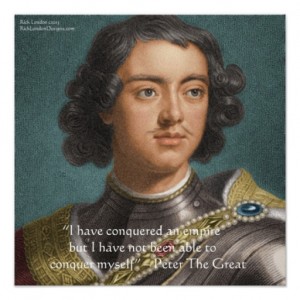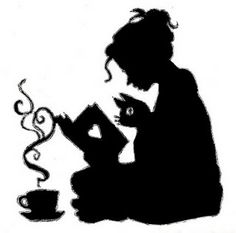




 A large book even by my standards- 928 pages in paperback, I’ve finally finished my journey in Russia: Peter the Great. Peter was one of the top three? I’m going to say, most interesting historical figures I’ve ever read about. Believing it was the story of a tyrant, instead I found an utterly dynamic and fascinating individual who can literally be called the forefather of modern Russia. I made that up though so don’t quote it.
A large book even by my standards- 928 pages in paperback, I’ve finally finished my journey in Russia: Peter the Great. Peter was one of the top three? I’m going to say, most interesting historical figures I’ve ever read about. Believing it was the story of a tyrant, instead I found an utterly dynamic and fascinating individual who can literally be called the forefather of modern Russia. I made that up though so don’t quote it.
Russia has always been an unknown beast for me. I knew about the 1917 Revolution in Russia, the fall of the last tsar Alexander Romanov, and about the subsequent communism, but not much if at all about the people, tradition and culture of Russia. The country has been isolated and proud, even fearful or hateful of ‘Western idea’ not only my lifetime but in much of its history. How did such a large country with a genetic match to most of Europe become so different? That answer isn’t here, but Peter was one of the few figures who broke that isolationism and exposed Russia to the world.
Near the end of the 18th century, most of Europe was well through the Enlightenment period, where men of science, medicine and knowledge were making big splashes of discovery on the world scene. By 1682, Elizabeth I of England had fought the Spanish Armada. British colonists were well settled in America. The Sun King Louis XIV was in power at Versailles. Many European governments were starting to lean towards the state we see them in today, and men of music, philosophy, and literature were starting to become an intellectual force on the world scene. Russia was still in the Middle Ages. Peter single-handedly dragged the country into the modern era, kicking and screaming the entire way. The whole nation was transformed slowly but surely. The things Peter accomplished in his reign left footprints for the people to follow in the decades and centuries to come.
Peter became Tsar at age 10 in 1782. His single biggest impact on his country may well be the entry of Russia into the seas. Peter had a fascinated, life-long affinity with the sea that no other Russian seemed to share. He began his reign with not one ship, no naval tradition, officers, navigators or seamen; before the end of his life, some Russian ships were equal to the best in the British navy. Other aspects of life he changed in Russia affected people from the highest ranks to the lowest peasant. Commercial, financial and even religious customs were ‘updated’ within Peter’s life. Russia had been typically closed off to the rest of Europe and was considered backwards and barbaric. After Peter became ruling Tsar, he spent a few years traveling in the West. He visited nearly every major capital except Paris and he came home brimming with ideas for his country. He then set to work with a steely determination. Nothing he implemented was easy, for the people despised change. The aristocracy and peasants alike dug in their heels like so many mules. When Peter sent tax collectors for his new projects through the realm peasants would take apart their houses log by log and disappear into the woods. A contemporary wrote: “The Tsar pulls uphill alone with the strength of ten, but millions pull downhill.”
To combat this cultural lethargy Peter use a multitude of tools at his disposal as supreme power in the land. Persuasion, laws, heavy taxation, decrees, beatings, self-example, hiring foreigners to train craftsmen, hiring and promoting peasants and blacks, and valuing merit overall above rank and birth, were all typical of his reign. His subordinates were like spoiled children and Peter would take away their candy until they obeyed. Peter said to his ministers, “You know yourselves that anything that is new, even if it is good and necessary, our people will not do without being compelled.”
Peter firmly believed in a man’s worth, not his privileges by birthright. He forced noblemen’s sons to rise through ranks rather than be promoted by right. This led to noblemen hiding their sons. Although Tsar, he applied this notion of worth to himself. When traveling he would refuse to receive honors or banquets, preferring to stay in local ‘hovels’ or tiny rooms near workshops where he could observe and learn local trades. Anything he saw he was interested in and insisted on learning to do himself. He became a proficient woodcarver and was proud of a massive chandelier he built himself and installed for his wife. He was like a raven who spies shiny things when it came to any modern machinery or sciences. Peter would stride into a shop and demand the master spend long hours teaching him until he got it right. Satisfied he would move on. He would jump into a ditch to help dig it, join shipbuilders in every part of the boat-building process. The princes, ministers and kings of Europe had never seen the like. As for the Russians, they were initially aghast but Peter had tremendous force of will and always got his way.
Peter the Great had many unique personal attributes for a ruler of his time. Peter was generous, forgiving to those he loved yet he never forgot a slight. He was humorous yet quick to fly into a rage and would beat his ministers and friends alike with a cane, then humbly beg their pardon. He was a tender and loving husband, to his second wife that is, who was a peasant girl that became Empress Catherine I. Many letters survive between them written in the tenderest terms of endearment. Amongst his closest friends were those he had raised up from humble origins, and foreigners. Peter ate sparingly but loved drink and forced his guests including ambassadors from other countries to partake in all-night revelries where people would wake up strewn about the room and not remember how they got there. He formed a ‘Jolly Company’ made up of a motley crew of men who went everywhere with Peter in his early reign. They roamed the countryside dropping in to eat and sleep with any unsuspecting nobleman in the vicinity, in his wake were anywhere from 80 to 200 followers. An average banquet for the Jolly Company started at noon and ended at dawn. The hijinks during church holidays reached a new peak as the Company wore various crazy costumes and would pile up in sleighs pulled by goats, pigs, even bears or dwarfs. Peter had a love of dwarfs and any found in the entire country would be given honors at court. Once a full expensive ‘royal’ wedding was given for two dwarf favorites. At church Peter was accustomed to striding straight up to the choir and loudly singing along. Needless to say this did not go over so well in England. When a band was present, Peter would take up the drums. His energy was dynamic, legendary like nothing I’ve ever heard of and he kept it up until the day he died.
At first in his teen years Peter’s older sister Sophia was Regent. She allowed Peter to spend his energy from about 14 years old on, forming a mock army comprised of boys his age from both the nobility and the peasant class. He was able to draw from the government arsenal to supply uniforms, banners, wooden cannon etcetera and they labored constantly to become a perfect little drill team with their own village. Peter enlisted himself at the lowest grade and refused to be promoted unless he earned it which was a trait he continued as Tsar. Eventually his army of guard regiments numbered 600 boys divided evenly into two companies. When he became Tsar around age 18, these war games became more and more realistic.
One of my favorite stories combining Peter’s typical antics with his temper happened in 1694 when he was 22. Peter used real soldiers including his boyhood army, totalling 30,000 men for his largest peacetime army maneuver. For nearly a year his soldiers had worked hard to put up a riverbank fort complete with trenches, a garrison and court of justice. The army was split into two and tasked with a siege war on the fort. The assaulting army had advanced and thrown a bridge across the Moscow River where they began to mine the fort. Peter had counted on a long siege in which he could practice all the Western mining and counter-mining techniques under the walls. After a long day of battle a banquet and drinking party was the norm. On one such occasion the armies were partying per usual. They partied so hard that in sudden inspiration, the attacking force decided to make an assault on the fort right then and there. The defending force was equally drunk and were in no state to resist so it was easily taken. Peter was outraged at the easy success, ordered the victors out and all the drunken ‘prisoners’ returned. He ordered that the fort not be stormed again until it was properly rebuilt. Three weeks later this was done and the fort was subdued properly in textbook manner.
In reading this book, every detail from Peter’s formative years to his exhaustive efforts to build
the Russian navy are included. Every aspect of his life is covered. Fortunately it was a long and busy life but I would expect many readers to struggle through some of the long political back-and-forths that cover 40 years. There are long accounts of his wars against Sweden and its young energetic King Charles XII, another interesting character. There were also the clashes with the Ottoman Empire and the Khans of the time. This is to be expected of a thorough non-fiction biography, yet I do wish this could be made into an abridged version simply about Peter. It is wonderfully easy to understand, even in military matters, but the mundane nature of war and politics can be pretty lengthy with backstory, and boring for anyone without an interest in that. I took the book in parts, sitting down to see what Peter was up to from time to time until I finished it. There are so many different stories and sides to Peter that you would have to read it yourself to get a true picture of the man. I would never regret reading it for the sheer number of times I laughed aloud or shook my head over some shenanigans, but the length really is tiresome. In fact, this review is so long because the book was so long and I had to get it all out!









